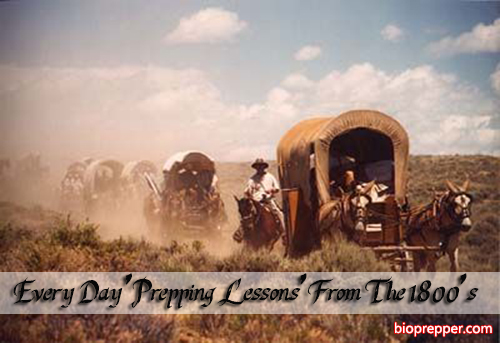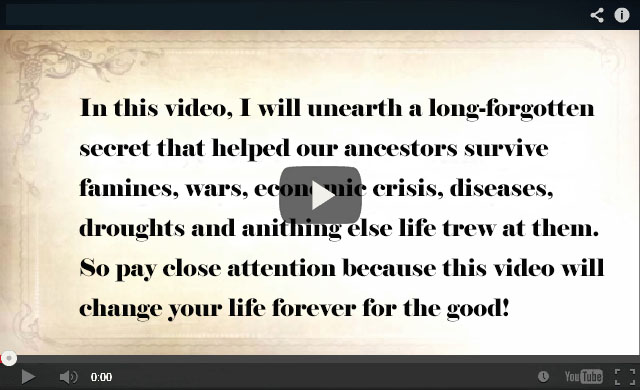Pioneer life has a special meaning in America. In less than 300 years, civilization spread across a vast continental wilderness. From the first landings in Virginia and Massachusetts in the early 1600’s, American settlers kept pushing westward behind an ever moving frontier. Into wild country went hunters, trappers, fur traders, miners, frontier soldiers, surveyors, and pioneer farmers. The farmers tamed the land and made it productive. Every part of America had its pioneers.

Most pioneers were willing to face toil and hardship for the sake of opportunity. They meant to carve homes out of the wilderness. Yankee farmers went west from the stony fields of New England, and Southern families went west from the crowded lands of Virginia and the Carolinas. Still other pioneers were immigrants newly arrived from Europe. English, Scotch, Welsh, and German pioneers went into the Ohio Valley. Scandinavian colonists settled mainly in the upper Mississippi Valley and on the Great Plains beyond the Missouri River.
Every Day ‘ Prepping Lessons ‘ From The 1800’s
Whatever their surroundings, the pioneers had to depend on themselves and on the land. Self-reliance was a frontier requirement. Game provided food and leather clothing. New settlers gathered wild fruits, nuts, and berries. For salt they boiled the water of saline springs. Maple sugar was made by tapping maple trees in early spring and boiling the sap until it thickened into a tasty sweetening. Substitutes for tea and coffee were provided by boiling sassafras root and brewing parched corn and barley. With an ax and adze for cutting tools, the pioneers made beds, tables, benches, and stools. They split logs into rails to make the zigzag fence that enclosed their clearings.
Pioneer women learned to supply their own household goods. Gourds served as pails and dippers. Wood ash was sifted to make soap. Tallow (sheep and cattle fat) was molded into candles. Every cabin had two spinning wheels—a big wheel for wool and a smaller wheel for flax. With their own home-woven “linsey-woolsey,” a coarse cloth of mixed linen and wool, pioneer women made their family’s clothing. Clothes were also made from animal skins, which the pioneers tanned into leather.
In this video, I will unearth a long-forgotten secret that helped our ancestors survive famines, wars, economic crises, diseases, droughts, and anything else life threw at them… a secret that will help you do the same for your loved ones when America crumbles into the ground.
Winter was a hard season on the frontier. In bitter weather the family huddled around the fire. When there was no leather, some people went barefoot and suffered frostbite. Food was scanty and monotonous. For months there were no fresh fruits or vegetables. In early spring, women looked eagerly for the first wild mustard and dandelion plants, which they could boil into a dish of “greens.”
As long as they had their health and strength, people could stand hardship. But every family had frequent bouts of illness. The most common frontier ailment was chills and fever. Young and old suffered from “the shakes,” shuddering with cold and then breaking into a drenching sweat. This disease came at the end of summer and lasted until frost. Since it was most common in marshy districts, the settlers thought it came from breathing damp air. Actually it was malaria, carried by mosquitoes. When swamps were drained, there were fewer mosquitoes and the number of malaria cases declined.
For medicines the pioneers had to provide for themselves. Women soon learned the use of herbs for healing. They used boneset for fever, pennyroyal to purify the blood, horehound for coughs, and ginseng for tonic. Syrups and salves were made from cherry root, horseradish, and witch hazel. Wild mustard, poplar root, and red sumac root went into teas, poultices, and powders. The standard cure for a chest cold was to rub the chest with goose grease and apply a mustard plaster.
Some frontier remedies were based more on superstition than science. Among these were potions of walnut bark “peeled upward,” boiled nettles, and “nanny tea,” made from sheep dung.
Pioneer families tended to be large. Most cabins had a cradle, hollowed from a poplar or cottonwood log, and the cradle was rarely empty. Children were helpful in new lands. Girls soon learned important household tasks—gardening, cooking, spinning, weaving, mending, sewing, making soap and candles. Boys worked in the woods and fields with their fathers. They learned to fell timber, to clear out brush, to split rails and build fences. A rail fence would keep hogs and sheep out of the corn, but deer could leap that barrier. It was the children’s job to chase deer out of the fields and to keep squirrels from devouring the growing crop. Children pounded dried corn to make cornmeal. When gristmills came into the neighborhood, it was typically a boy’s chore to ride to the millstream with a bag of grain behind his saddle and return with a dusty bag of meal.
These three old lessons will ensure your children will be well fed when others are rummaging through garbage bins. Click here to learn all about the 3 skills that will help you thrive in any crises situation.
Although pioneer families were extremely resourceful and nearly self-sufficient, neighbors were highly valued on the frontier. When fires went out, one could borrow a pan of glowing coals from the nearest cabin. Neighbors from miles around helped newcomers with logrolling, house-raising, and barn-raising. Entire communities joined in hunts for wolves, foxes, squirrels, and rabbits.
These common tasks, shared by pioneer neighbors, also provided amusement on the frontier. A house-raising was also a picnic, with women spreading a dinner on the grass while children swung from grapevines and the men laid up the roof poles on a new cabin. Neighbors gathered for “husking bees,” competing to see who was the fastest at stripping the husks from ears of corn. The cornstalks were kept for fodder, while the husked corn was stored in a crib. Pioneer women held “quilting bees,” exchanging family news while they sewed patchwork together. One amusement that did not involve household tasks was the barn dance. With a local fiddler playing such tunes as “Skip-to-my-Lou” and “Way Down in the Pawpaw Patch,” men, women, and children joined in square and circle dances by lantern light on a rough barn floor.
OTHER USEFUL RESOURCES!
Blackout USA (EMP survival and preparedness guide)
Bullet Proof Home (A Prepper’s Guide in Safeguarding a Home )
Backyard Innovator (All Year Round Source Of Fresh Meat,Vegetables And Clean Drinking Water)
Conquering the coming collapse (Financial advice and preparedness )
Liberty Generator (Easy DIY to build your own off-grid free energy device)
Backyard Liberty (Easy and cheap DIY Aquaponic system to grow your organic and living food bank)
Family Self Defense (Best Self Defense Strategies For You And Your Family)
Sold Out After Crisis (Best 37 Items To Hoard For A Long Term Crisis)
US Water Revolution (Generate Your Clean Water Anywhere)
Alive After The Fall (Key Survival Situation Procedures and Knowledge )
Mega Drought USA:(Discover The Amazing Device That Turns Air Into Water)

